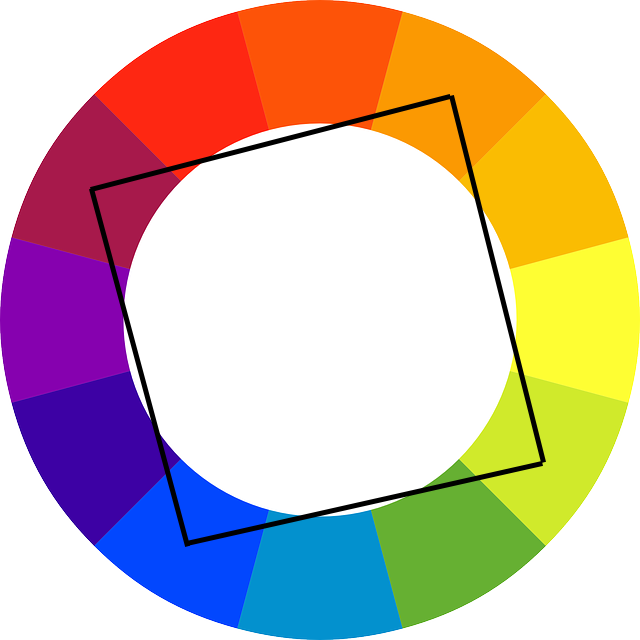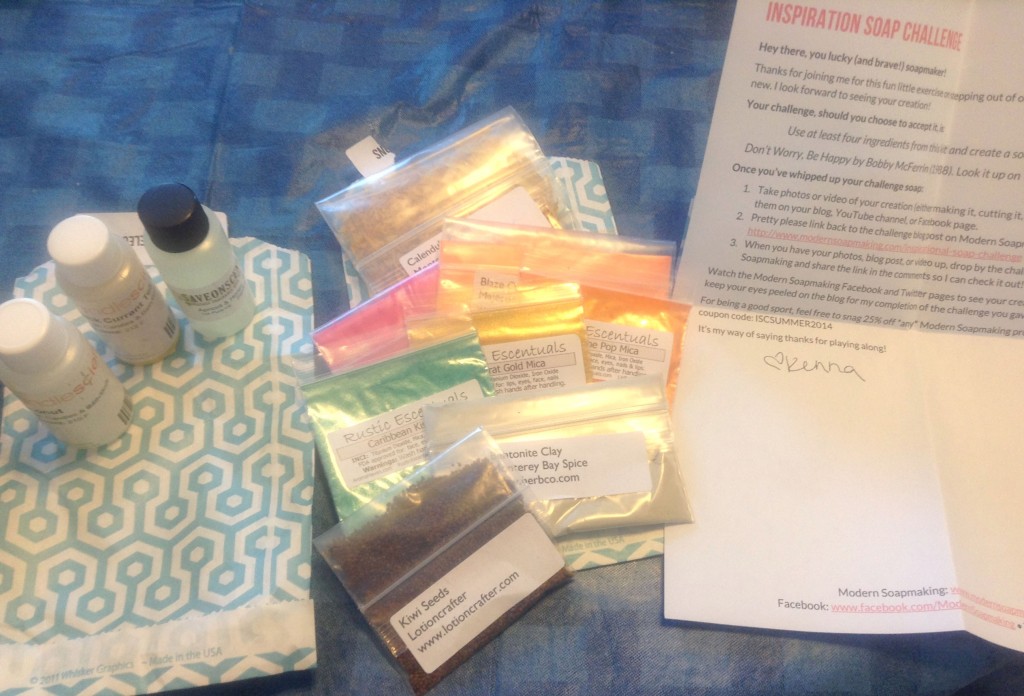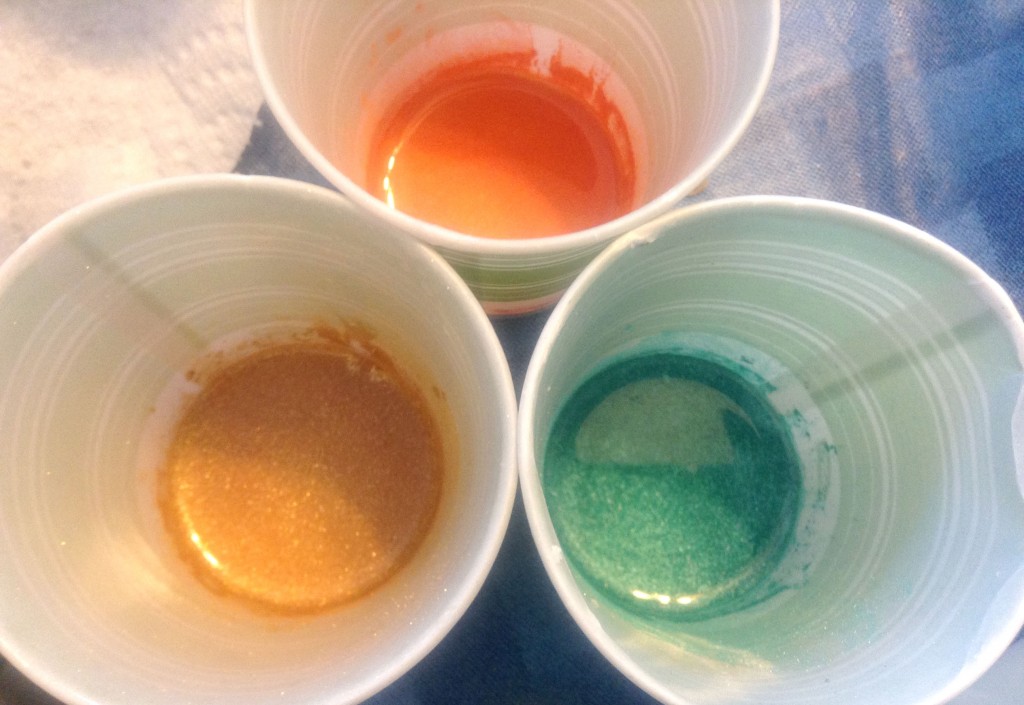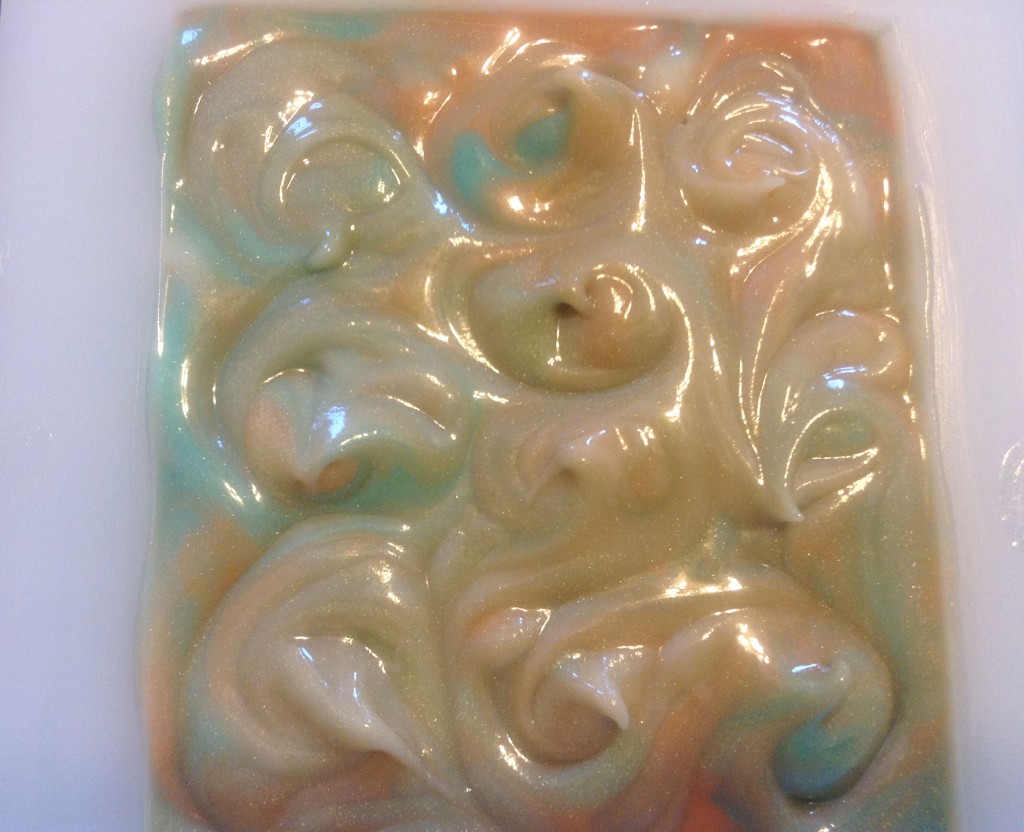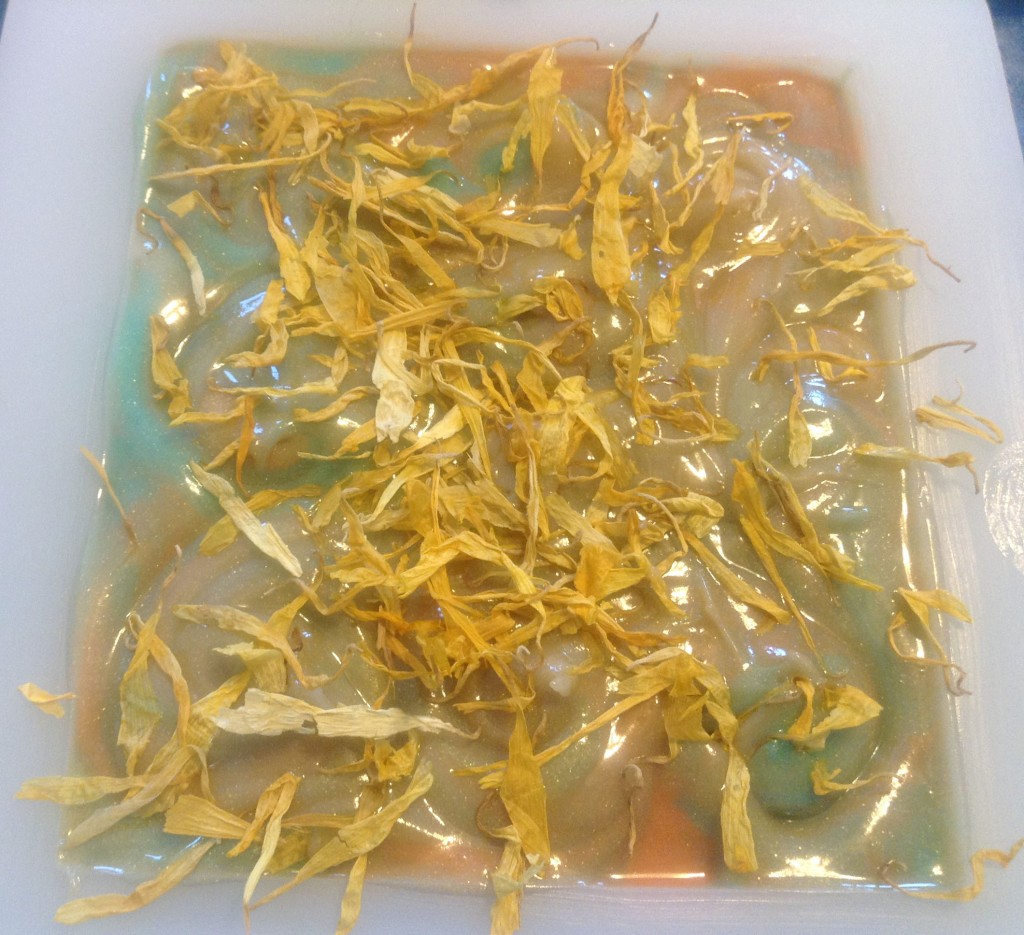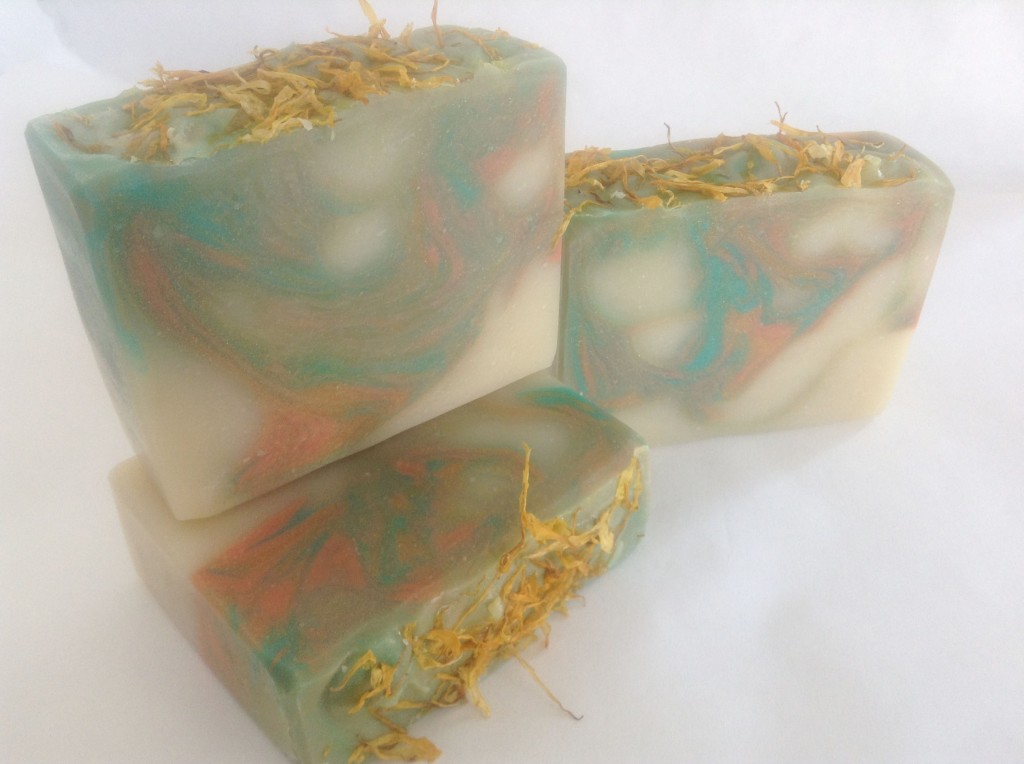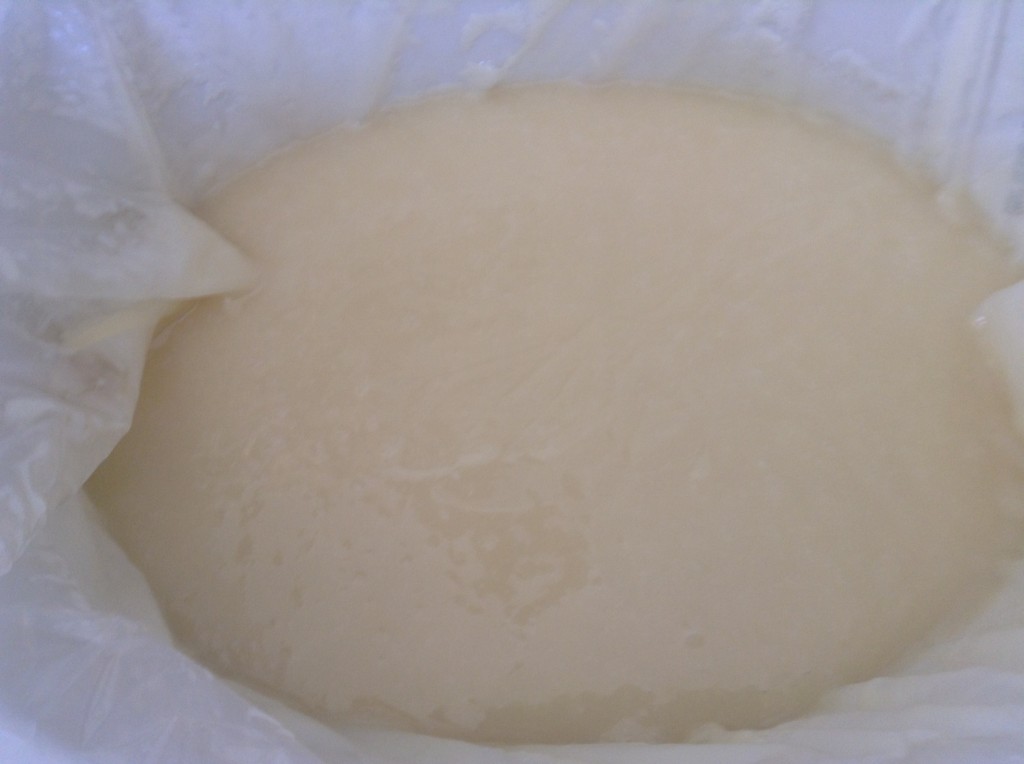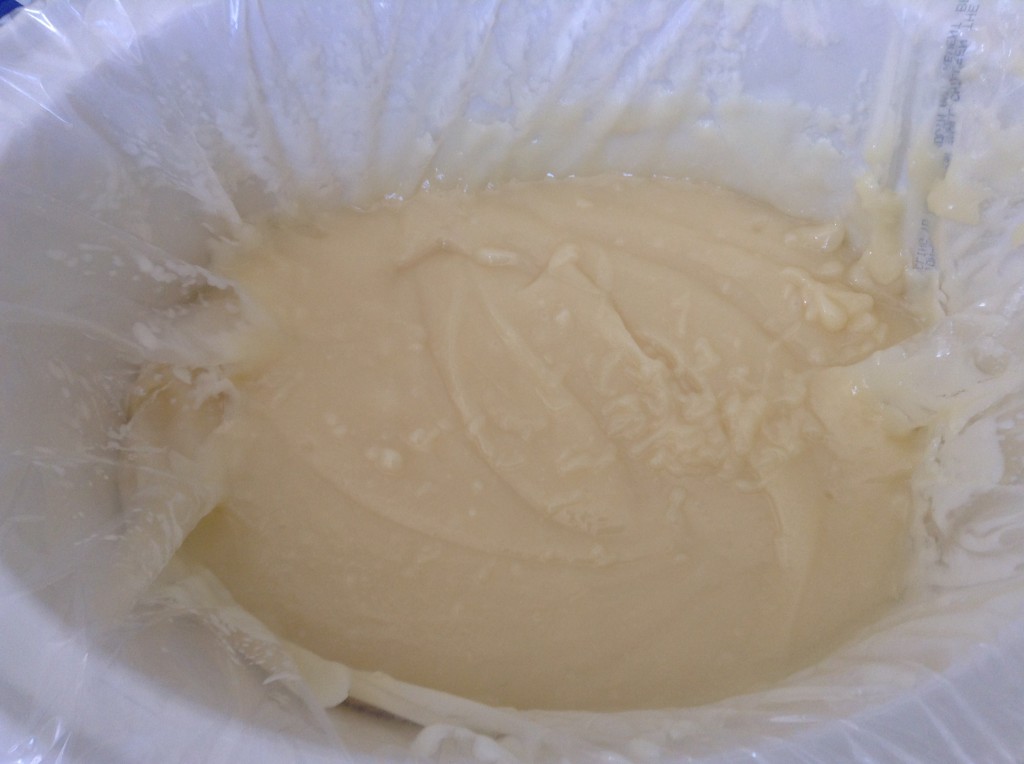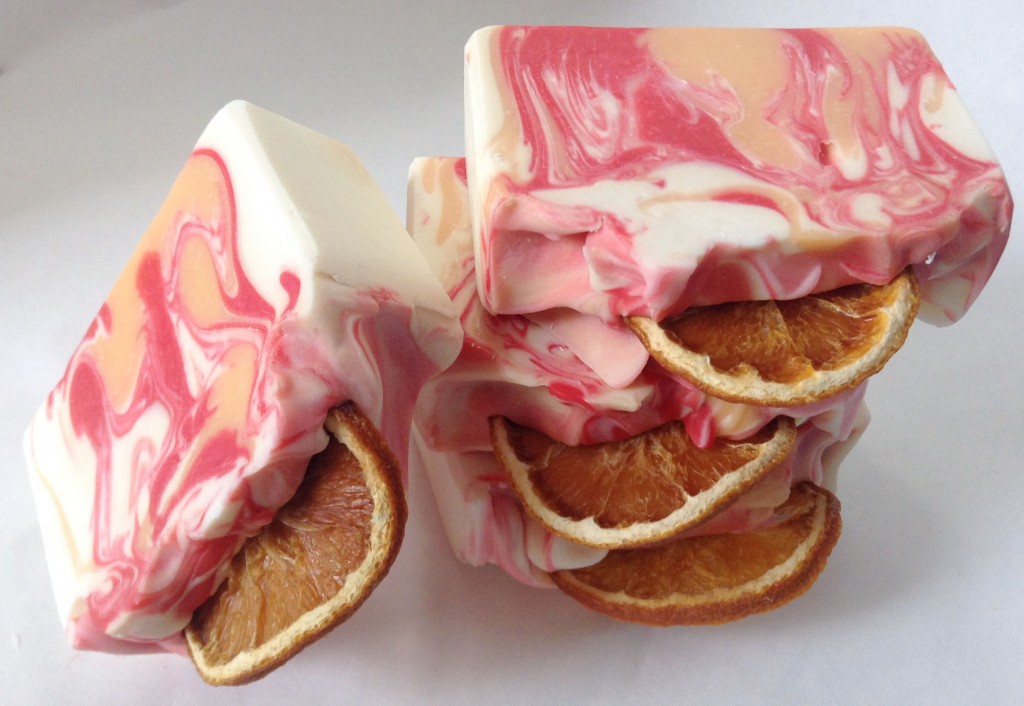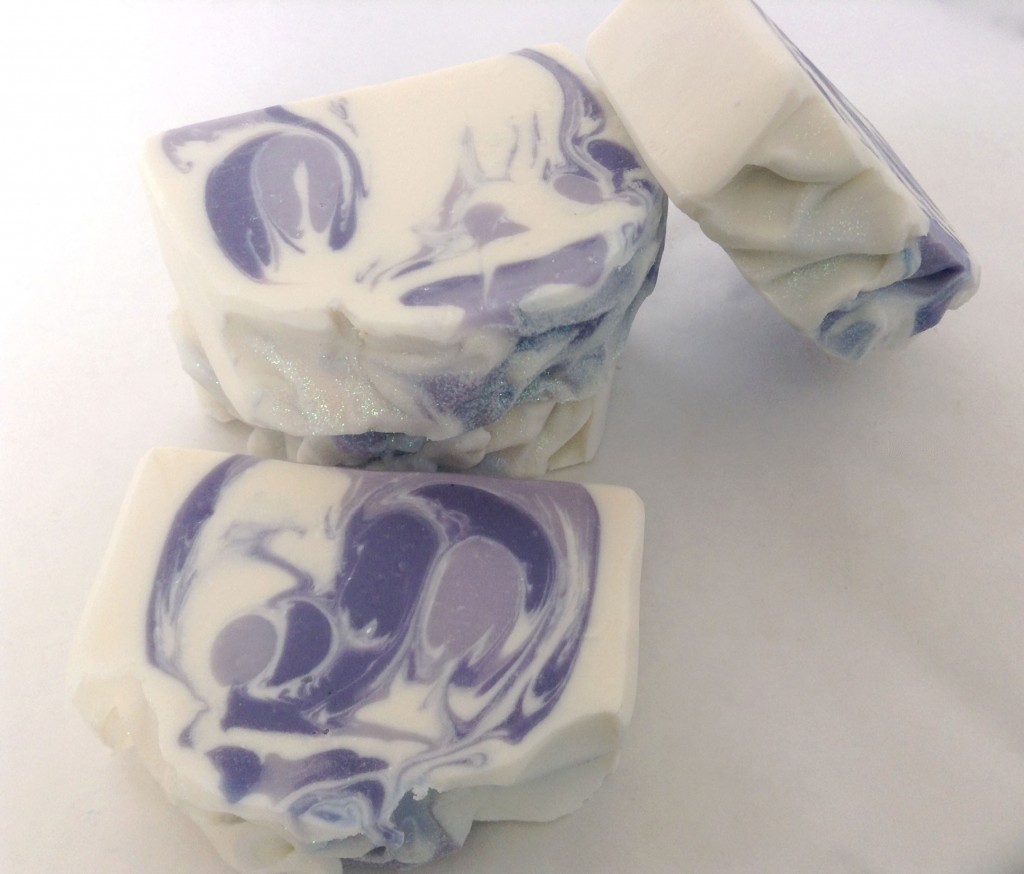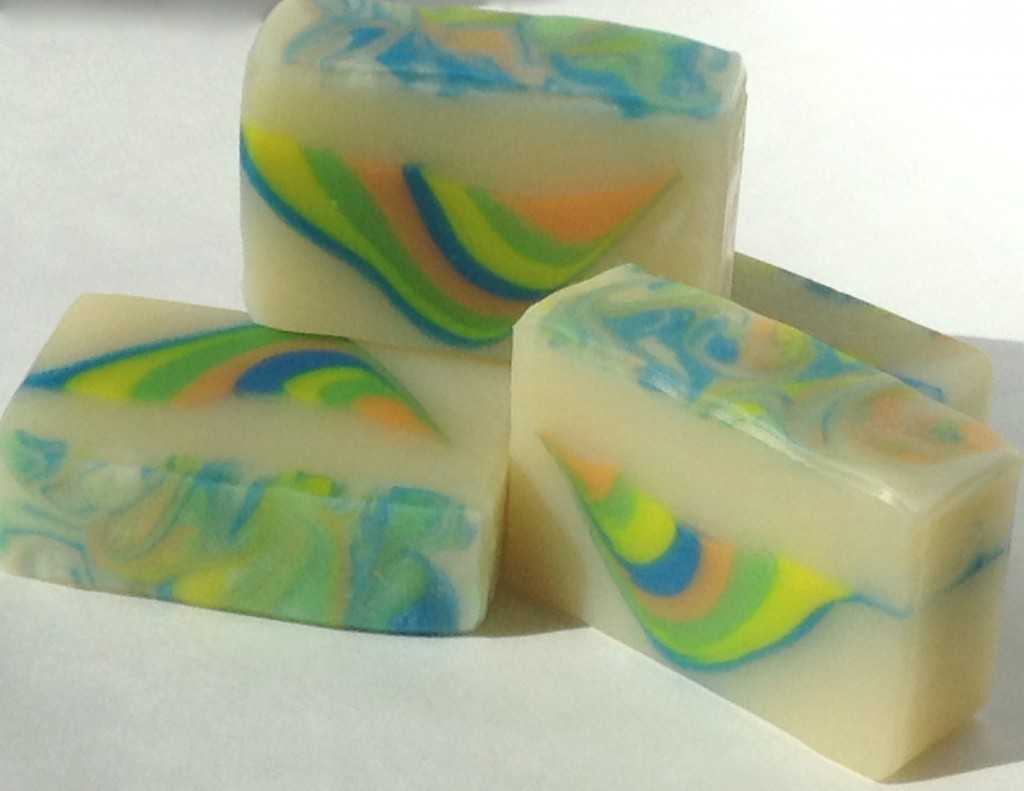
I haven’t participated in the Soap Challenge Club in a long time. I really wanted a chance to try out the Butterfly Swirl, perfected (maybe invented?) by Zahida of Handmade in Florida. I don’t have a deep mold like Zahida, but the beauty of the Butterfly Swirl is that you can get pretty decent results even with a regular mold like mine.
When I participated in the S.O.A.P. Panel last year, I tested a fragrance called Mahogany. I said at the time that it reminded me of a sexy man. You can read my thoughts about that fragrance here and here. I loved the way it smelled. I have been wanting to make a soap with a color palette similar to this:

I knew I wanted to use Nurture mica. I have the Vibrance mica set and the Pastels mica set. I previously used the 24 Karat Gold mica from Rustic Escentuals in my Inspiration Soap Challenge. Even in cold process soap, it retains a lot of its sparkle. I hadn’t tried Bramble Berry’s Copper Sparkle mica, but after a quick check to see that it was safe for use in cold process, I decided to try it. I ordered it some time ago as part of a sample pack. I have used Bramble Berry’s Cappuccino mica in several soaps in the past. I love the rich brown shade. My palette hasn’t captured the exact tones of the micas, but it’s close.
I recall hearing Celine say in one of her videos that one color that really pulls a soap together is white. I think she’s right about that. Even if it’s just a little bit of white, it really seems to bring out the design. So, in addition to the four mica colors, I also used a little bit of titanium dioxide to produce a cream color in my soap.
I decided to call the soap “Sexy Man Soap” after my first reaction to smelling the fragrance. Here is a video of the making of the soap:
I really enjoyed the entire process of making this soap. The colors are a lot of fun to work with, and the fragrance is delicious. I’m going to have to order more of it.
The more I work with micas, the more I fall in love with them. I used mainly oxides and ultramarines in the past, but micas have such beautiful hues, and even if their sparkle doesn’t always come through in cold process soap, they’re still lovely to work with.
This technique is interesting because it’s hard to tell if what you’re doing will result in a butterfly shape in the soap. I knew that working with a flatter mold like mine would give me less room to get the shape I wanted, and I was quite pleasantly surprised when I cut the soap and found several bars did indeed have a butterfly shape.

This first set has a lighter top, but I can make out the shape of wings.
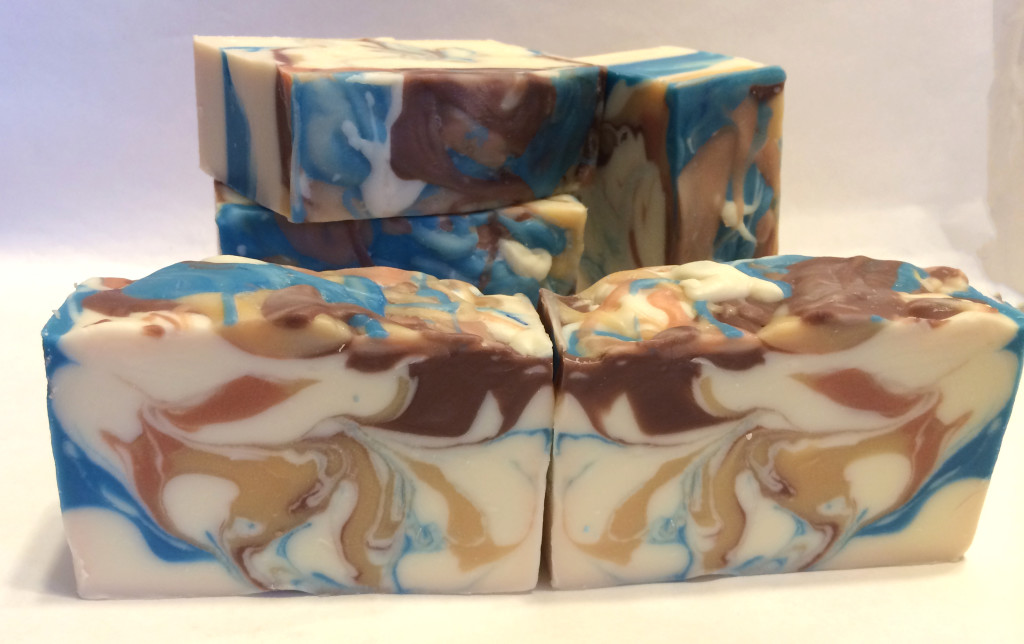
This second set has a nice shape, and more of the gold and brown show through. The blue is the outline of the wings.
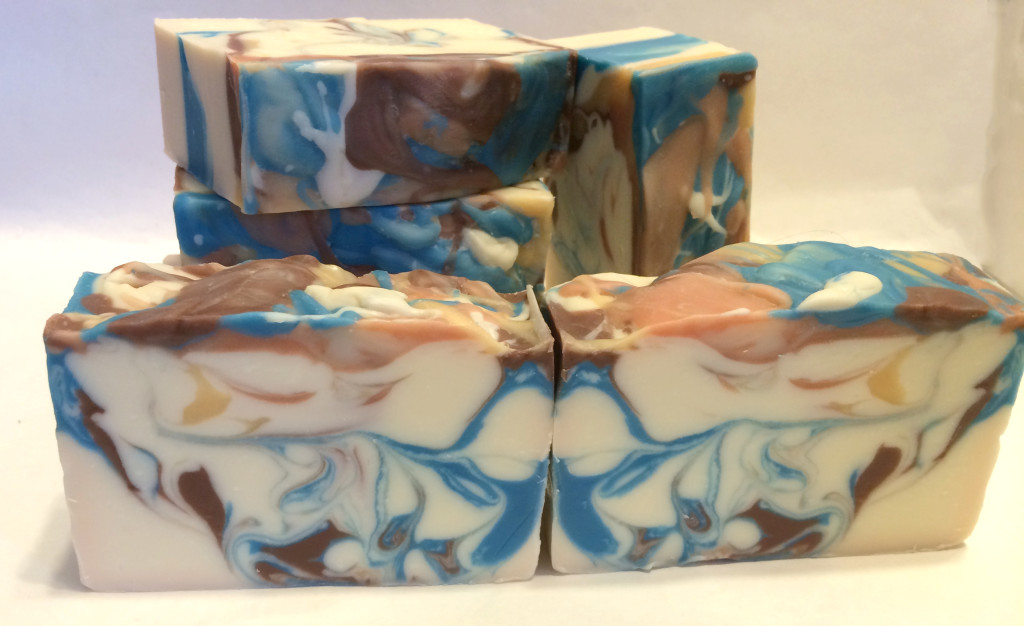
I thought this third set of soaps made the best butterfly. The brown accents look like the edges of wings, and the blue where the soaps join looks like a butterfly body. The splatter tops look like the tops of butterfly wings. It is this last picture that I will enter for the challenge contest. Don’t you just love that Blue Vibrance mica?
I’m happy with how these came out. I made them for my husband Steve, and he’s claiming three, but he says I can sell the rest of them in the shop. Look for them in time for Valentine’s Day, in case you want to get some for your own sexy man.
You know what? It felt pretty good to make a video again after a long hiatus, too.

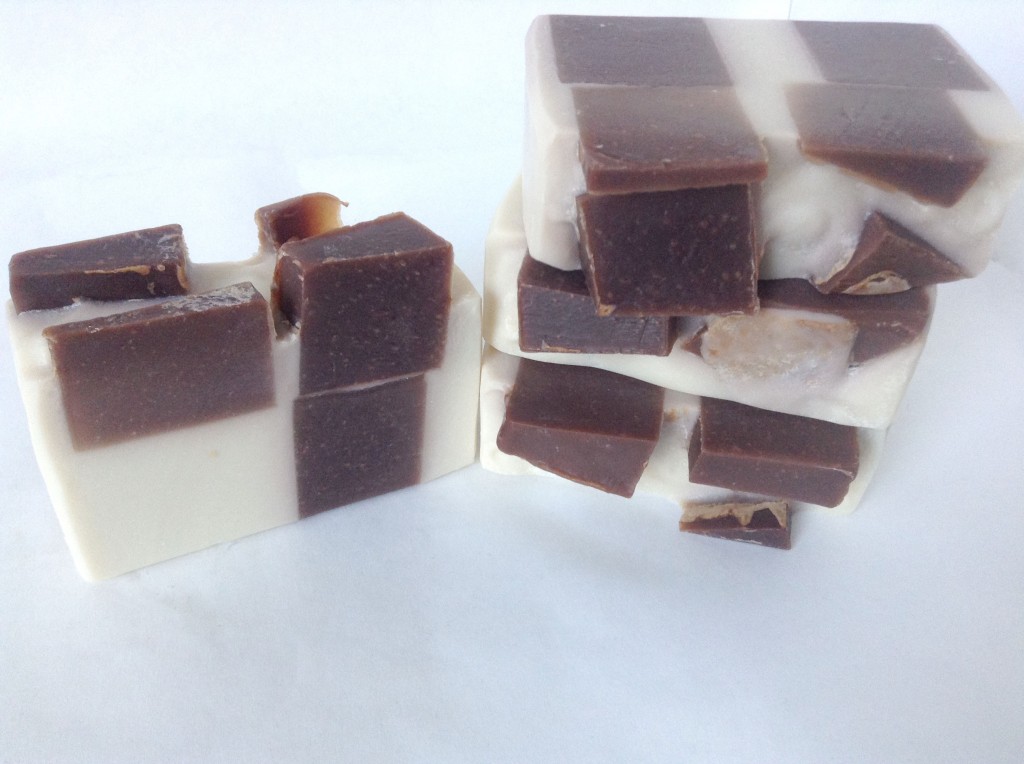
 Autumn Fig Harvest became one of my favorites as soon as I made it. I love the spatter tops of these bars, and the fragrance is one of my favorites—top notes of bright and crisp apple, lemon and ginger with middle notes of fig, caramel, and cinnamon that lead to more earthy base notes of coffee, twigs, and wet forest. Ingredients: olive oil, water, coconut oil, sustainable palm oil, fragrance, shea butter, sweet almond oil, castor oil, cream, kaolin clay, colorants, tussah silk. Available September 13.
Autumn Fig Harvest became one of my favorites as soon as I made it. I love the spatter tops of these bars, and the fragrance is one of my favorites—top notes of bright and crisp apple, lemon and ginger with middle notes of fig, caramel, and cinnamon that lead to more earthy base notes of coffee, twigs, and wet forest. Ingredients: olive oil, water, coconut oil, sustainable palm oil, fragrance, shea butter, sweet almond oil, castor oil, cream, kaolin clay, colorants, tussah silk. Available September 13.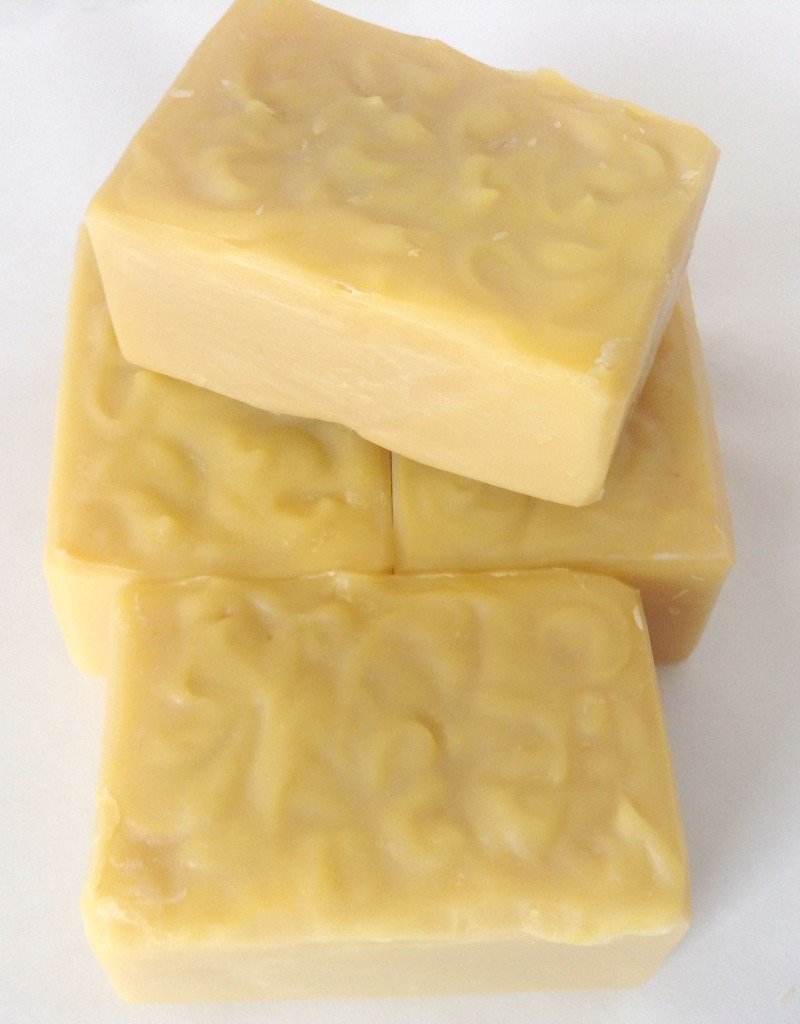 Carrot Buttermilk is a lovely facial soap. Carrots are rich in beta-carotene and Vitamin A and have antioxidant and soothing properties. Buttermilk has alpha-hydroxy acid, which helps rejuvenate skin with gentle exfoliation. Ingredients: olive oil, coconut oil, sustainable palm oil, water, sodium hydroxide, carrot purée, apricot kernel oil, castor oil, buttermilk, kaolin clay, tussah silk. Available September 21.
Carrot Buttermilk is a lovely facial soap. Carrots are rich in beta-carotene and Vitamin A and have antioxidant and soothing properties. Buttermilk has alpha-hydroxy acid, which helps rejuvenate skin with gentle exfoliation. Ingredients: olive oil, coconut oil, sustainable palm oil, water, sodium hydroxide, carrot purée, apricot kernel oil, castor oil, buttermilk, kaolin clay, tussah silk. Available September 21. Johnny Appleseed, born John Chapman, was from nearby Leominster, MA, right here in Worcester County. This soap is named in honor of our native son, and it smells as delicious as the apples he helped spread across America—a crisp mix of red and green apples. Ingredients: olive oil, water, coconut oil, sustainable palm oil, sodium hydroxide, fragrance, shea butter, castor oil, cream, kaolin clay, colorants, cranberry seeds, tussah silk.
Johnny Appleseed, born John Chapman, was from nearby Leominster, MA, right here in Worcester County. This soap is named in honor of our native son, and it smells as delicious as the apples he helped spread across America—a crisp mix of red and green apples. Ingredients: olive oil, water, coconut oil, sustainable palm oil, sodium hydroxide, fragrance, shea butter, castor oil, cream, kaolin clay, colorants, cranberry seeds, tussah silk. 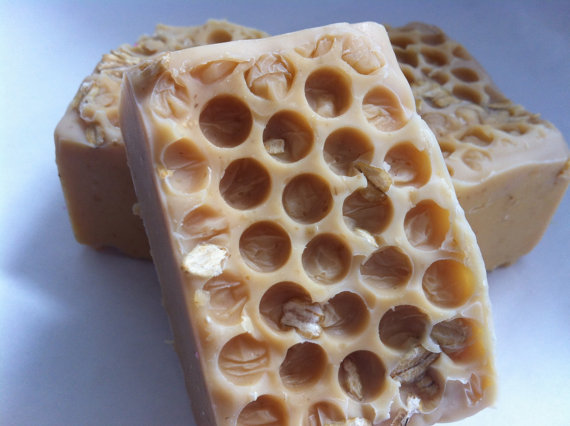 A great favorite, this soap is made with real raw local honey. I have a beekeeper friend who trades me her honey for soap! It’s also chock full of other great things for your skin, such as finely ground oatmeal and whole oats and goat milk. To top it off, it smells like grandma’s oatmeal cookies! This one will be a favorite with both men and women. Ingredients: olive oil, goat milk, coconut oil, sustainable palm oil, sodium hydroxide, shea butter, fragrance, castor oil, finely ground oatmeal, honey, whole oats.
A great favorite, this soap is made with real raw local honey. I have a beekeeper friend who trades me her honey for soap! It’s also chock full of other great things for your skin, such as finely ground oatmeal and whole oats and goat milk. To top it off, it smells like grandma’s oatmeal cookies! This one will be a favorite with both men and women. Ingredients: olive oil, goat milk, coconut oil, sustainable palm oil, sodium hydroxide, shea butter, fragrance, castor oil, finely ground oatmeal, honey, whole oats.  Coffee & Cream is made with a mix of invigorating coffee and rich cream and scented with a blend of coffee house coffee and Turkish mocha. Smooth and silky! Great for either men or women. Ingredients: olive oil, coffee, coconut oil, sodium hydroxide, sweet almond oil, cream, fragrance, cocoa butter, shea butter, castor oil, kaolin clay, colorant, tussah silk, coffee grounds.
Coffee & Cream is made with a mix of invigorating coffee and rich cream and scented with a blend of coffee house coffee and Turkish mocha. Smooth and silky! Great for either men or women. Ingredients: olive oil, coffee, coconut oil, sodium hydroxide, sweet almond oil, cream, fragrance, cocoa butter, shea butter, castor oil, kaolin clay, colorant, tussah silk, coffee grounds.  Pumpkin Pie is a fall favorite. Made with genuine New England One Pie® pumpkin and scented with a heavenly pumpkin pie fragrance, you don’t want to miss this one. Just like pumpkin spice lattes, they only appear once a year. Ingredients: olive oil, coconut oil, sustainable palm oil, One-Pie® Pumpkin, water, sodium hydroxide, shea butter, fragrance, castor oil, cream, sweet almond oil, colorant, pumpkin pie spice. Available September 14.
Pumpkin Pie is a fall favorite. Made with genuine New England One Pie® pumpkin and scented with a heavenly pumpkin pie fragrance, you don’t want to miss this one. Just like pumpkin spice lattes, they only appear once a year. Ingredients: olive oil, coconut oil, sustainable palm oil, One-Pie® Pumpkin, water, sodium hydroxide, shea butter, fragrance, castor oil, cream, sweet almond oil, colorant, pumpkin pie spice. Available September 14. Vanilla Chai Latte is nice combination of warm vanilla and spices like cinnamon and clove. A wonderful fall treat! Another nice fragrance for either men or women. Ingredients: olive oil, water, coconut oil, sustainable palm oil, fragrance, cream, shea butter, castor oil, kaolin clay, colorant, tussah silk. Available September 28.
Vanilla Chai Latte is nice combination of warm vanilla and spices like cinnamon and clove. A wonderful fall treat! Another nice fragrance for either men or women. Ingredients: olive oil, water, coconut oil, sustainable palm oil, fragrance, cream, shea butter, castor oil, kaolin clay, colorant, tussah silk. Available September 28.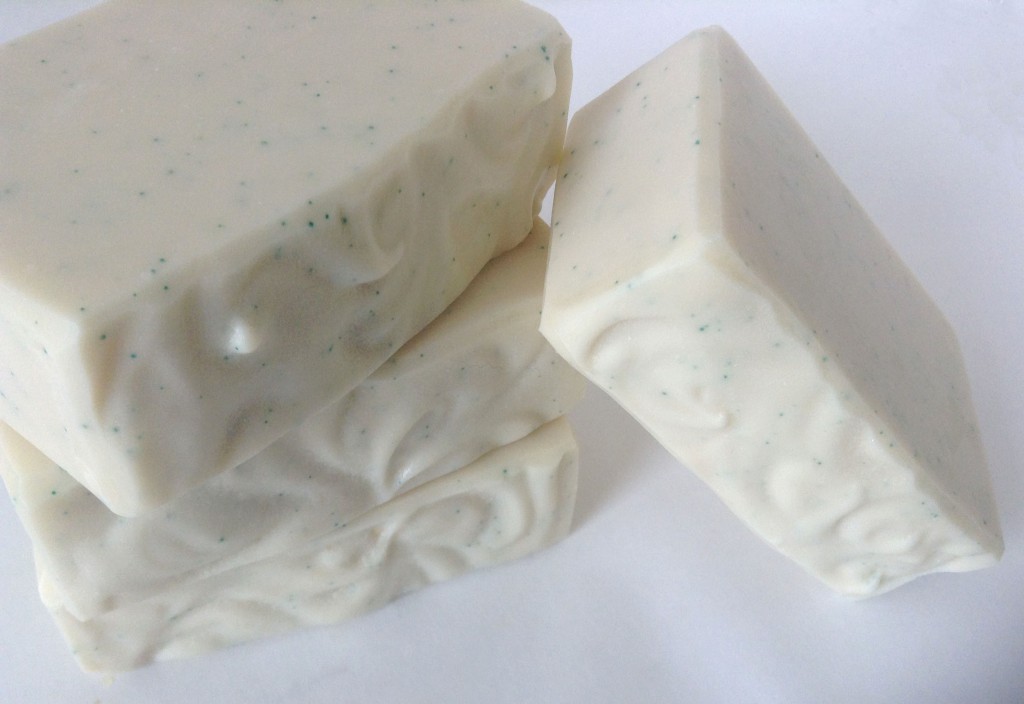
 Ingredients
Ingredients Mango butter is truly wonderful. It is similar to shea butter in some respects in that it has a significant amount of unsaponifiables, meaning that more of the conditioning and moisturizing qualities of the butter make it through the saponification process. It also contributes to a creamy lather.
Mango butter is truly wonderful. It is similar to shea butter in some respects in that it has a significant amount of unsaponifiables, meaning that more of the conditioning and moisturizing qualities of the butter make it through the saponification process. It also contributes to a creamy lather. I added the shea butter to the mango butter. I use shea butter and/or cocoa butter in almost all of my soaps because I love what it does for skin. It does speed up trace, so be careful.
I added the shea butter to the mango butter. I use shea butter and/or cocoa butter in almost all of my soaps because I love what it does for skin. It does speed up trace, so be careful. In with the coconut oil. It’s so hot here today that it’s completely melted already. Actually the mango butter was kind of soft as well. It’s usually a little harder (and almost brittle) than it was today. Coconut oil is great for bubbles—it contributes to fluffy lather and cleansing as well as bar hardness. I use coconut oil in almost all of my soaps.
In with the coconut oil. It’s so hot here today that it’s completely melted already. Actually the mango butter was kind of soft as well. It’s usually a little harder (and almost brittle) than it was today. Coconut oil is great for bubbles—it contributes to fluffy lather and cleansing as well as bar hardness. I use coconut oil in almost all of my soaps.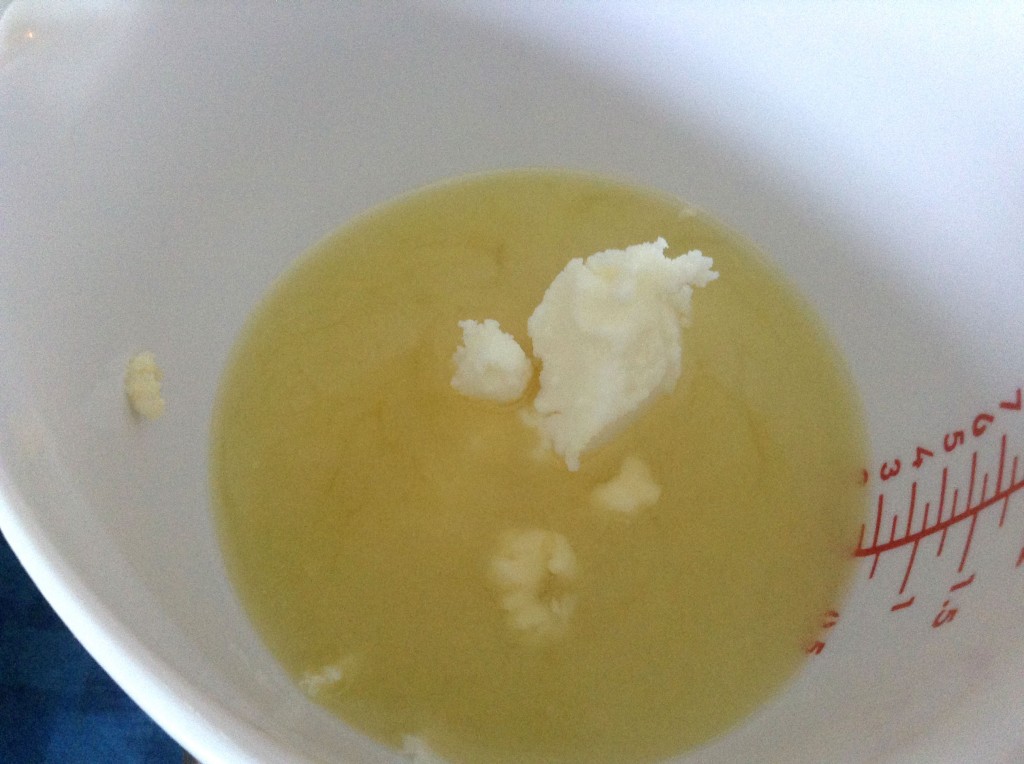 The last hard oil is palm oil, which I use because it contributes to bar hardness, stable lather, and conditioning. I use it in a lot of my soaps.
The last hard oil is palm oil, which I use because it contributes to bar hardness, stable lather, and conditioning. I use it in a lot of my soaps. A quick word about olive oil: you can use any grade of olive oil in soap, but I always use pure golden olive oil. I don’t think it’s necessary to use extra virgin olive oil in soapmaking. In fact, it’s not different enough from pure golden olive oil to warrant its own category in SoapCalc, though olive oil pomace is. I personally don’t use pomace because pure golden olive oil is available at my local discount membership warehouse for a really good price (and no shipping). I use olive oil in every single soap I make. It’s highly conditioning and contributes to stable lather and bar hardness. I believe it to be the single best soaping oil there is.
A quick word about olive oil: you can use any grade of olive oil in soap, but I always use pure golden olive oil. I don’t think it’s necessary to use extra virgin olive oil in soapmaking. In fact, it’s not different enough from pure golden olive oil to warrant its own category in SoapCalc, though olive oil pomace is. I personally don’t use pomace because pure golden olive oil is available at my local discount membership warehouse for a really good price (and no shipping). I use olive oil in every single soap I make. It’s highly conditioning and contributes to stable lather and bar hardness. I believe it to be the single best soaping oil there is.
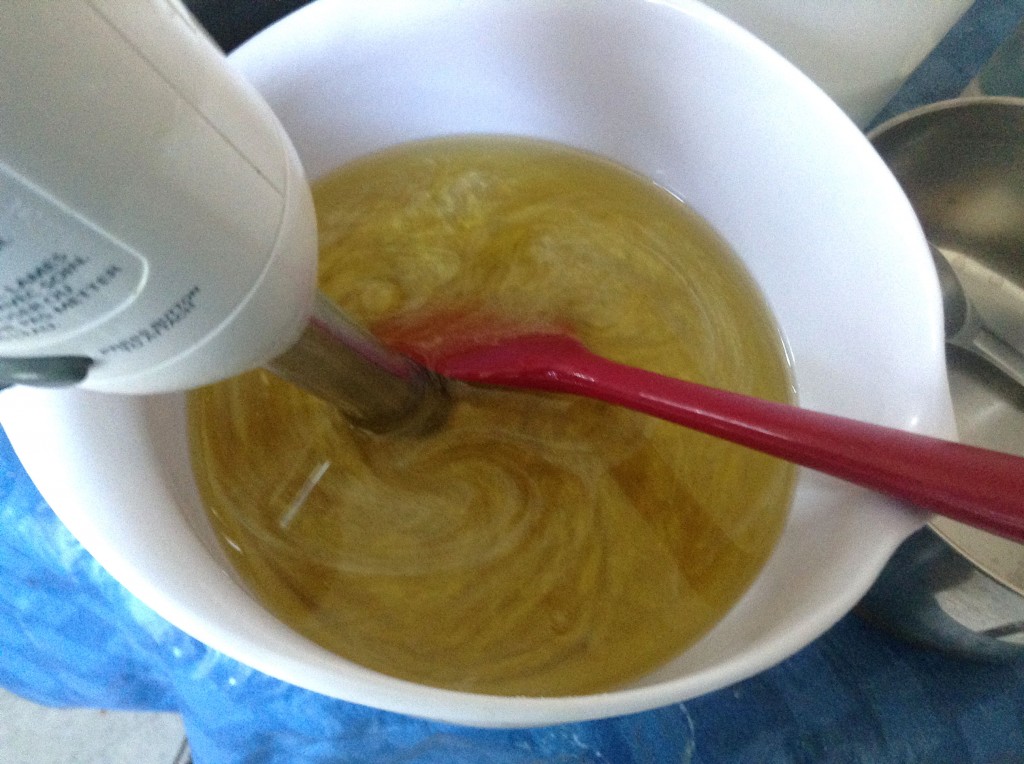


 Working with milk requires a bit more effort than working with water. I use a stainless steel pot because if I need to quickly cool it down the mixture, stainless steel is a better conductor (hot or cold) than plastic or glass. I also add the lye to the milk just a little at a time and stir until the lye is dissolved. Then I add more. It can take a little while. Once all the lye was added, and I was relatively sure the all of it had dissolved in the milk, I added the sodium lactate to the lye mixture and stirred well to dissolve it.
Working with milk requires a bit more effort than working with water. I use a stainless steel pot because if I need to quickly cool it down the mixture, stainless steel is a better conductor (hot or cold) than plastic or glass. I also add the lye to the milk just a little at a time and stir until the lye is dissolved. Then I add more. It can take a little while. Once all the lye was added, and I was relatively sure the all of it had dissolved in the milk, I added the sodium lactate to the lye mixture and stirred well to dissolve it. I checked the temperature of the lye mixture, and it was about 82°F. Pretty good. I don’t like it to rise above 90°F. If it starts to become too warm, I put the pan in a cool water bath to bring the temperature down.
I checked the temperature of the lye mixture, and it was about 82°F. Pretty good. I don’t like it to rise above 90°F. If it starts to become too warm, I put the pan in a cool water bath to bring the temperature down. I stick blended until a very light trace, then I added the honey. Honey will accelerate trace, so make sure you add it at a light trace, or you may find you have gone too far with the stick blending. When I use honey in soap, I mix it with an equal amount of distilled water. In this case, I used 1.5 t of honey, so I mixed it with 1.5 t of water. Then I microwave the honey for a very short time—only 5-10 seconds. I stir until it dissolves in the water. I find that I have fewer issues with scorching, overheating, and
I stick blended until a very light trace, then I added the honey. Honey will accelerate trace, so make sure you add it at a light trace, or you may find you have gone too far with the stick blending. When I use honey in soap, I mix it with an equal amount of distilled water. In this case, I used 1.5 t of honey, so I mixed it with 1.5 t of water. Then I microwave the honey for a very short time—only 5-10 seconds. I stir until it dissolves in the water. I find that I have fewer issues with scorching, overheating, and  I blended to a pretty thick trace, then poured the soap into my 10-inch silicone loaf mold, which was the perfect size for this recipe. Bramble Berry recommends using sodium lactate to make it easier to remove soap from this mold, and in any case, sodium lactate adds a nice silky feel to soap.
I blended to a pretty thick trace, then poured the soap into my 10-inch silicone loaf mold, which was the perfect size for this recipe. Bramble Berry recommends using sodium lactate to make it easier to remove soap from this mold, and in any case, sodium lactate adds a nice silky feel to soap. Like Cee, I spooned soap on the top after doing a little bit of sculpting, but I didn’t think my tops were as pretty as hers, so I experimented a bit with a skewer to create a slightly different design.
Like Cee, I spooned soap on the top after doing a little bit of sculpting, but I didn’t think my tops were as pretty as hers, so I experimented a bit with a skewer to create a slightly different design. I spritzed it with 91% isopropyl alcohol, which might not have been strictly necessary since I didn’t choose to gel the soap, but it can’t hurt anyway. Isopropyl alcohol can help prevent soda ash on the tops of soap, but it’s not 100% effective.
I spritzed it with 91% isopropyl alcohol, which might not have been strictly necessary since I didn’t choose to gel the soap, but it can’t hurt anyway. Isopropyl alcohol can help prevent soda ash on the tops of soap, but it’s not 100% effective.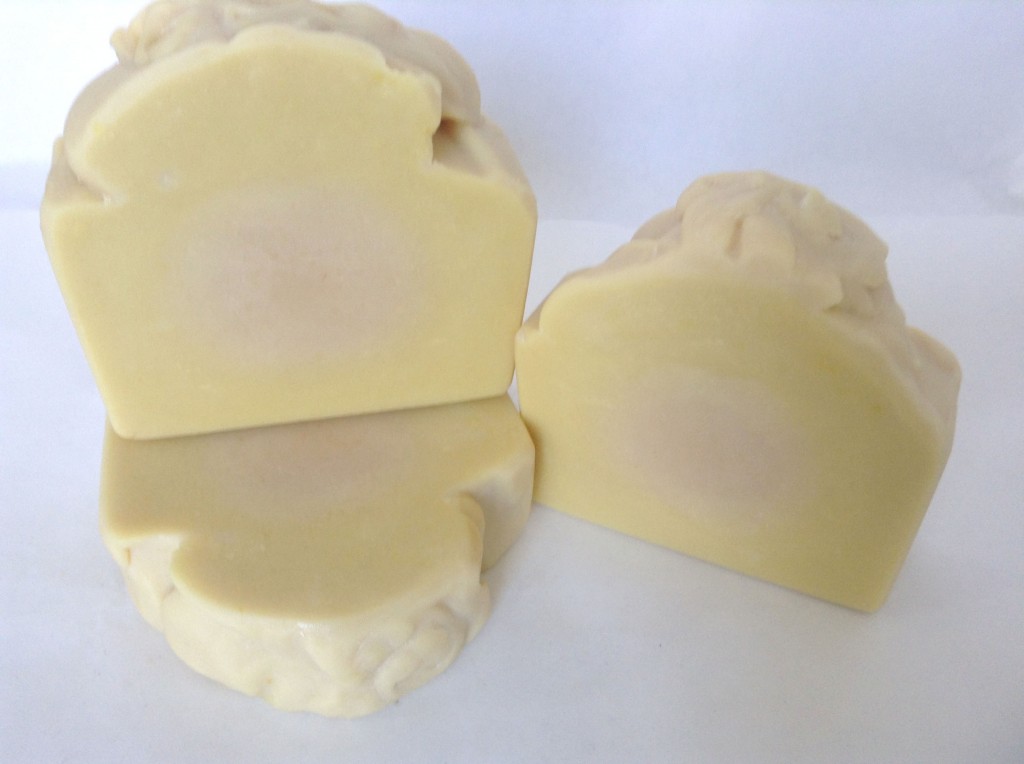 The cut soaps smell wonderful. I am going to let them have a nice long cure and give them to family and friends for Christmas.
The cut soaps smell wonderful. I am going to let them have a nice long cure and give them to family and friends for Christmas.




